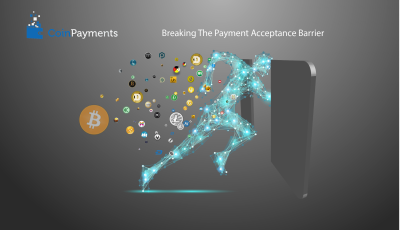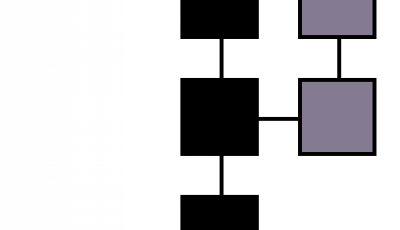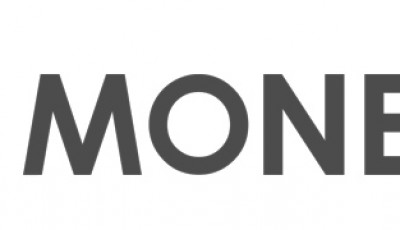A Turning Point for Altcoins: Will the Scams Ever End?
 There’s an old rule of journalism that says that any article title that contains a question can be answered with “no.” I’m sad to say that this article is no exception to that rule – the scams will never end.
There’s an old rule of journalism that says that any article title that contains a question can be answered with “no.” I’m sad to say that this article is no exception to that rule – the scams will never end.
But they will become far less frequent, and the “real” altcoins will rise to much greater prominence. Altcoins have become modern-day penny stocks, used by the few to abuse the many with schemes of all sorts – generating false hype, making fake proclamations and announcements, pumping out fake volume, and so on. The allure of suddenly striking it rich is so great that it has prevented the many coins backed by real and working teams, who are intent on building new features for their coins, developing their communities, and fostering merchant acceptance from being given the spotlight they so richly deserved.
But it appears that era is finally coming to a close. There’s a little bit of sanity creeping into the altcoin world, and certainly not just from me. I have plenty of allies in that cause, and this piece is dedicated to them. So, without further ado: Will the scams ever end? No, but if you use the tools in this article, hopefully you’ll never be on the receiving end of them.
1. Actually DYOR.
This is the most often overlooked point made about scams. DYOR is an acronym that stands for Do Your Own Research. I prefer DYOFR, but we won’t get into that right now. The acronym has a dual meaning. First is that you ought to literally do your own research. There’s no one better to figure out if something is a good investment for you than you, so read about it yourself. Consider others’ opinions, but don’t follow them blindly. Read extensively from a diverse array of sources before deciding to invest in an altcoin.
Second is that you shouldn’t trust anyone else without a good reason. DYOR exists because people often don’t follow it, which means there are people who prey on those who don’t. When money is involved, there will definitely always be someone who wants yours to be theirs. At least don’t make it easy for them.
If everyone followed DYOR, 90% of scams would fail. If everyone followed DYOR and rule #2, it would be 98%. Yes, I just made those numbers up.
2. If you DYOR and discover something that looks like a scam, talk about it.
If you do this and you’re right, a lot of people will be very happy that you pointed it out instead of letting it continue on. You might’ve saved people quite a lot of money.
If you do this and you’re wrong, well, maybe you’ve found a good investment opportunity. The worst case scenario is looking a little overly-skeptical and perhaps a little foolish – the best case scenario is shutting down a con-man and saving a bunch of investors some of their money.
3. Start your initial investigation out right.
This one is probably the most important part. If you DYOR, but you research the wrong things, that’s not going to turn out well – if anything, you might come away believing you have found a great opportunity that is just a scam.
One of my favorite places to start off is CoinGecko.com. They use a variety of different closed-source and open-source metrics to evaluate coins in an interesting manner. They factor in community activity, market cap, liquidity, and source code contributions, to get a more complete picture of cryptocurrencies available on the market. Community activity and source code contributions tell you how many people are working on the coin; market cap and liquidity tell you how active the markets for the coin are. Be wary of any coin with mismatched metrics in these pairs. A coin with a lot of community activity, but very little source code activity is very fishy – makes it look like either a large and deluded crowd of people or an attempt at faking social media activity by a clever scam artist. A coin with a high market cap and a low liquidity is also fishy – it implies that the coin’s market cap is probably higher than it deserves to be, and perhaps that the coin is undergoing a pump phase.
On the other side, a coin with low community activity but high source code activity might be a very good prospect – active development is a very big positive. Low market cap and high liquidity is also a good thing to see – this points toward an undervalued coin, in my view.
After CoinGecko, I run through three different avenues of research.
First, the BitcoinTalk announcement thread. Read through as much of it as you think is reasonable. Are a large percentage of the posts by a few members? Remember that – it might be good or bad, but it’s probably good. A dedicated core user base is a strong tool. Are a lot of the people posting just repeated the same buzzwords or claims of value? Probably bad – feeling the need to justify a coin repeatedly inside of the echo chamber is a sign of fear.
Second, put your Google-fu to work looking for NEGATIVE discussions of the coin. Find the worst things people have to say about it. Don’t look at their views through rose-colored glasses, either – consider what they have to say carefully. The altcoin market is about avoiding the bad players, because they outnumber the good greatly. Be critical of everything you read.
Third, take a look at the coin’s social media platforms. Twitter followers? Facebook fans? Subreddit subscribers? Posts per day? Does the coin have a forum? How active is it?
These factors are all considered by CoinGecko, but you should look yourself as well. Do the social media arenas they participate in seem staged, or organic? Is someone creating an illusion of community, or is there a community?
The reason you look at social media last is because of the final rule.
4. Do not get caught in the echo chamber.
Every altcoin has its own echo chamber – if you get caught in it, you won’t be investing, you’ll be hoping.
Hope is the mind-killer; fear is what keeps you searching.













Unfortunately lot of scamming happening within the crypto/Bitcoin environment. Most scammers are anonymous and they keep getting away for their actions. Most of them will not get caught and they can repeat their scam again, just like a vicious circle..